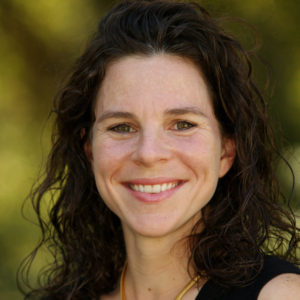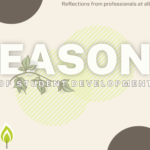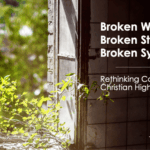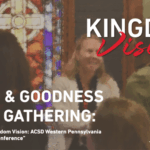I received a message from a parent this fall asking, “Is campus life even happening this year?” After moving through a brief wave of defensiveness, I laughed to myself thinking, campus life has not happened this authentically in a long time. While we certainly have fewer large programs and events, our opportunities for loving others well in community have never been so clear.
Every morning our students don their masks as they leave their rooms to protect themselves and one another. They eat outdoors, they learn under tents, and they attend chapel virtually in a perhaps never to be re-created season of learning and sacrifice. Our students, almost exclusively in the 18-22 age range, are not at high risk for ill effects of COVID-19, yet for the most part, they have faithfully covenanted for the good of the whole.
While I am no doubt weary from this long challenging pandemic, I have found hope in the many and varied ways that God’s work of molding and shaping young people has faithfully persisted at our institutions.
Selfless Community
In 1 Corinthians 9:19 Paul reminds the troubled Corinthians, “Though I am free and belong to no one, I have made myself a slave to everyone, to win as many as possible.” Our campus is encouraging students to move toward this selfless community more now than ever before. I hosted a group of honors candidates on Zoom this weekend and most of them named our campus’ community as one of the main elements that attracts and excites them about being at a Christian liberal arts college like Westmont. I smiled knowing that most of the students were thinking of the benefits they would receive by participating in our small relational community where they will be known and seen by others. But what is more compelling to me as I consider our campus community is the opportunity our students will have to sacrifice for their communities – to give up some of their own rights and privileges for the sake of their neighbors and the kingdom of God. Scripturally, we’re meant to live in community and to move from being unconscious consumers to intentional contributors. This shift from consumer to contributor is what happens as we become more aware of how we interact with those around us and how our lives irreversibly intertwine with others and the Spirit of God.
Engaging the Big Qustions
What else gives me hope? In this season of less formal programming, I see more intentional space and opportunities to engage students with the big hairy life questions. In Faith for Exiles, Kinnaman and Matlock (2019) share from their research that young Christians today are “more willing to be challenged than the church is willing to challenge them” (p. 51). Christian higher education has a remarkable opportunity to come alongside the church and deeply challenge our students in their learning and their discipleship. In a recent conversation I had with a student leader I asked her, “What’s one area of your life where you need to allow the Holy Spirit to more deeply transform you?” I was pleasantly surprised at the student’s honest and vulnerable response. She quickly identified mercy as an area for growth. In our conversation that ensued, I learned that my question was simply furthering God’s work already underway in growing mercy in this young woman’s soul.
Sadly, I think far too many college students go through their whole education never asking big, important questions like “What do I really care about?,” “Is my life about something that matters beyond myself?,” and “Who is God and what is right and true?” Our institutions are not places students will be able to come solely as “passports to privilege” (Garber, 2007, p. 27) but—even amidst a pandemic—our institutions provide places for students to grapple with some of life’s hardest questions and to put the needs of others before their own.
Re-Assessing Programs
Finally, I’m delighted that in the absence of our robust traditional programming calendar our staff and students have had the opportunity to assess and improve program strategies and outcomes. We’ve asked questions like, “Is this the best way to facilitate ministry and outreach?,” “How do we share important information with new students before they arrive on campus?,” and “What are the critical elements of our hallmark programs and what can we set aside for now?,” among others. More new ideas have emerged over the past 11 months than I could have ever imagined because student leaders and staff have had the space to dig deeper to ask the questions and conduct the research that time has not traditionally allowed.
While some of the programmatic holes this year have been difficult, it is clear to me that we in Christian student development will emerge in a better place and the students who have journeyed with us this year have learned invaluable skills of flexibility, creativity, and resilience. Campus life may not be happening in the traditional way, but student transformation and discipleship have never been more front and center.
References
Garber, S. (2007). The fabric of faithfulness: Weaving together belief and behavior. InterVarsity Press.
Kinnaman, D., Matlock, M., & Hawkins, A. (2019). Faith for exiles: 5 ways for a new generation to follow Jesus in digital Babylon. Baker Books.







